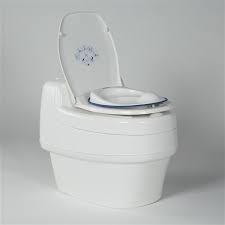
Revolutionizing Waste Management with Composting Toilets
In an era where sustainability is paramount, the composting toilet emerges as a remarkable innovation. This eco-friendly solution not only addresses waste management challenges but also offers significant benefits for the environment. Designed to function without water, composting toilets are increasingly popular in eco-conscious households, off-grid locations, and even urban environments seeking sustainable alternatives. This article will explore the workings of a composting toilet, its advantages, and considerations for those looking to adopt this green technology.
Understanding the Composting Process
At its core, a how does a composting toilet work operates by breaking down human waste into compost through a natural biological process. This transformation relies on aerobic bacteria, which thrive in oxygen-rich environments to decompose organic material. The process begins when waste enters the toilet’s composting chamber, where carbon-rich materials like sawdust or coconut coir are added. These materials help balance the nitrogen content of human waste, creating the ideal conditions for bacteria to work efficiently.
The decomposition process involves several stages. Initially, mesophilic bacteria break down the waste at moderate temperatures, followed by thermophilic bacteria that take over as temperatures rise. This heat generation is a crucial aspect, as it not only accelerates decomposition but also helps kill pathogens. Over time, the waste material is converted into nutrient-rich humus, which can safely be returned to the soil, completing the natural cycle.
The Benefits of Going Green
Composting toilets offer numerous advantages that make them an attractive option for environmentally conscious individuals. Firstly, they significantly reduce water usage, as they operate without the need for flushing. This feature is particularly beneficial in areas facing water scarcity or for those looking to minimize their ecological footprint. Additionally, these toilets contribute to soil enrichment by producing compost that can be used in gardens and landscapes, reducing the need for chemical fertilizers.
Another key benefit is the reduction of wastewater pollution. Traditional toilets flush waste into sewage systems, where it undergoes energy-intensive treatment processes before being released into water bodies. Composting toilets, on the other hand, prevent this cycle altogether, minimizing pollution and conserving energy. Furthermore, their simple design and minimal maintenance requirements make them a practical choice for remote or off-grid locations, where traditional plumbing may be impractical or costly.
Considerations for Adoption
While composting toilets offer many benefits, there are important factors to consider before making the switch. Users must be committed to regular maintenance, as proper ventilation and the addition of bulking agents are essential to prevent odors and ensure efficient decomposition. Additionally, local regulations may dictate the use and installation of composting toilets, so it’s crucial to be informed about any legal requirements in your area.
Incorporating a composting toilet into your lifestyle requires a shift in mindset towards sustainable living. By understanding the mechanics, benefits, and considerations, individuals can make informed decisions that align with their environmental values. Whether you’re looking to reduce water usage, enrich your soil, or minimize pollution, composting toilets offer a practical and eco-friendly solution for managing waste naturally.



